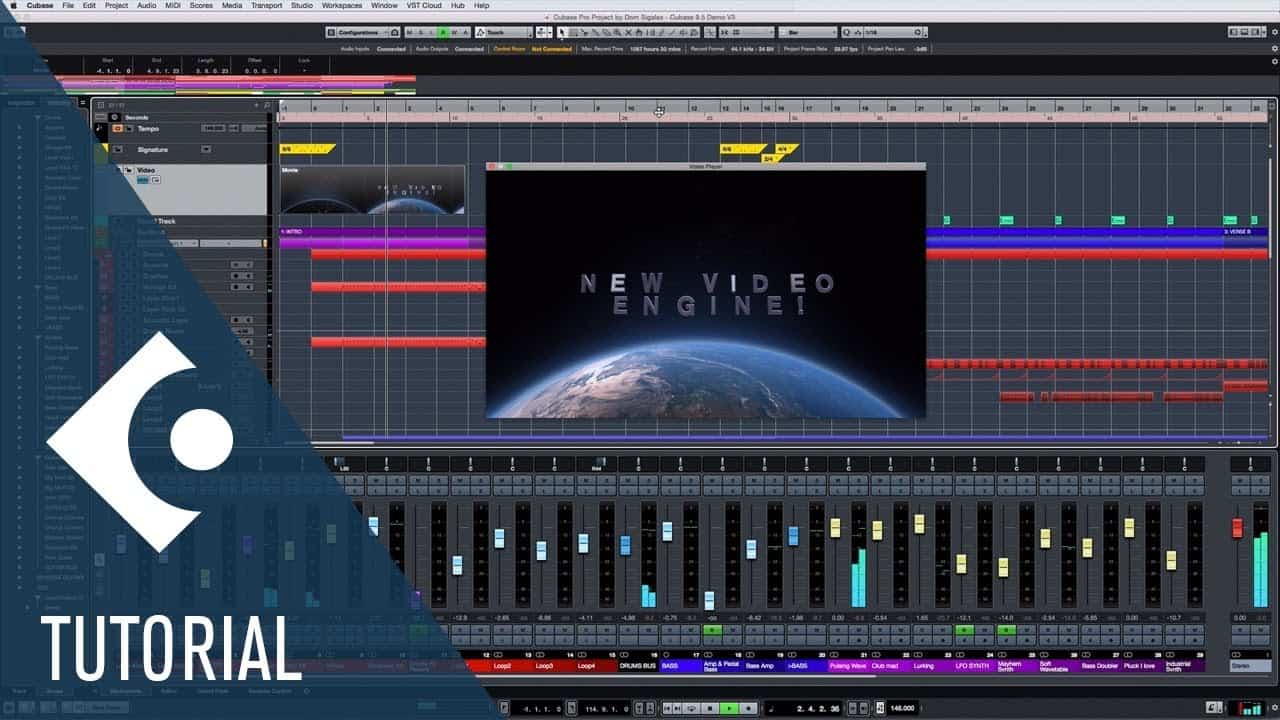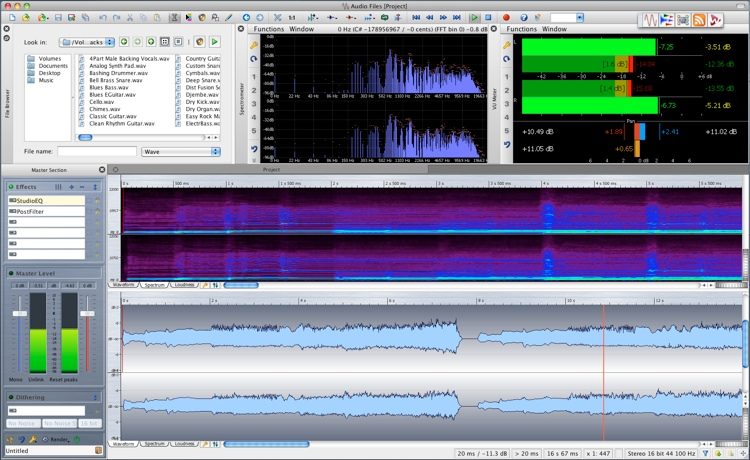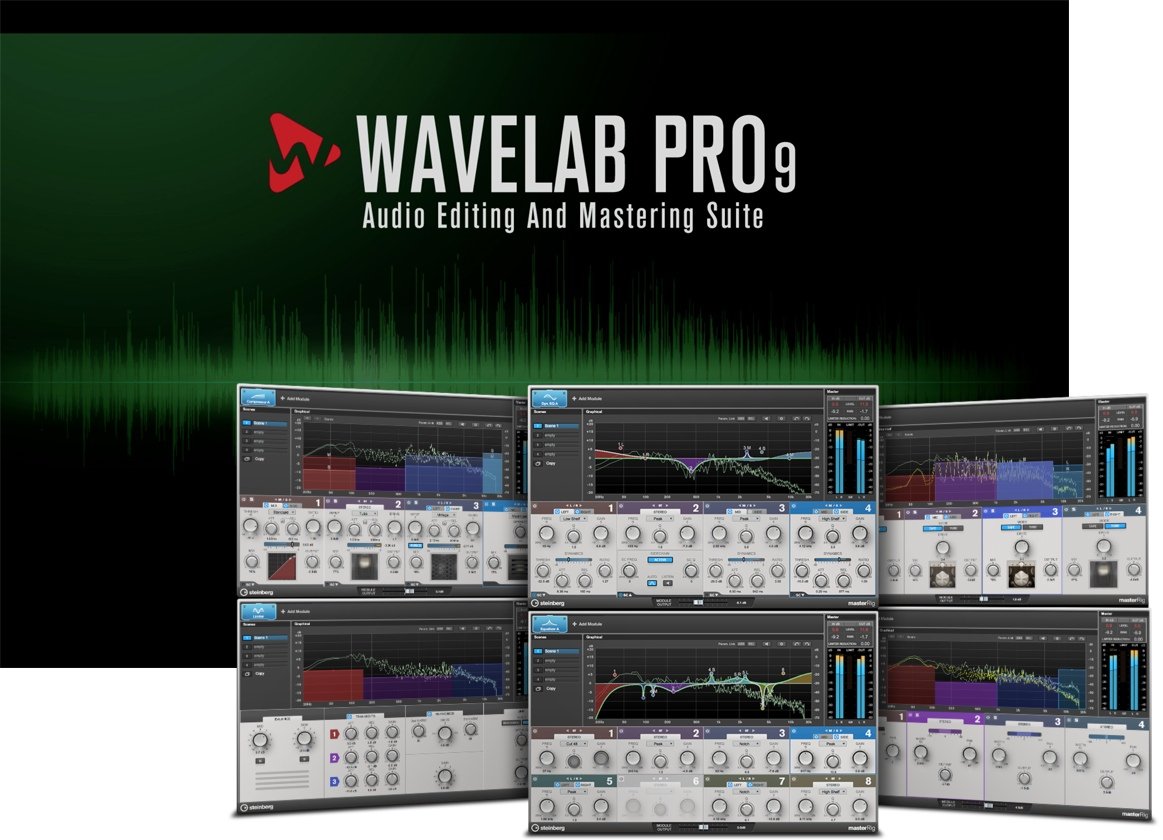

- #STEINBERG WAVELAB ELEMENTS 9.5 TUTORIAL OFFLINE#
- #STEINBERG WAVELAB ELEMENTS 9.5 TUTORIAL PROFESSIONAL#
RestoreRig allows you to remove noise from an audio recording with different restoration modules. It is useful in taming dynamic instruments. This is a basic plug-in that minimizes peaks in your audio file, allowing a louder mix without clipping. It offers high-class sound quality, accuracy, flexibility, and control. MasterRig allows you to master audio material in an intuitive and creative way. This plug-in is useful for correcting an imbalance or adjusting levels between stereo channels, or for mixing down to mono. The Ducker plug-in can only be used as a clip effect in the audio montage. This plug-in lets you control (modulate) the volume of clips placed on a track with the signal of one or more clips placed on the next adjacent track below it. It is only available in the Master Section.
#STEINBERG WAVELAB ELEMENTS 9.5 TUTORIAL PROFESSIONAL#
This plug-in is a professional sample rate converter providing exceptional transparency and preservation of the frequency content.

#STEINBERG WAVELAB ELEMENTS 9.5 TUTORIAL OFFLINE#
Another is to apply mastering processors directly to each mix using Cubase’s Direct Offline Processing functionality, thereby allowing you to come back and tweak those settings later in a very WaveLab-esque way, but this can become somewhat fiddly.WaveLab-specific plug-ins use the plug-in format of WaveLab, and cannot be used with other applications. This matters because, as you work through your montage’s mixes, you may decide that settings used on an earlier mix need to be modified in view of the mix you’re currently mastering, but the processor settings you used are likely lost.Ī workaround here is to save the processors and settings for each individual mix as an effects-chain preset that you can recall and tweak later if needed. This is the stage where you may encounter the biggest drawback with this approach: it prevents you from easily tweaking the mastering processor setup for any individual mix. Drawbacks and workaroundsĪt this point, you can apply any final level trimming on the mastered mixes, either by adjusting the gain of each mastered mix individually, or via channel-level automation. Alternatively, if your hardware doesn’t provide internal audio busses, you can simply export each mix to a new mastered version and then reimport this to a ‘mastered’ track. This bouncing can be done using an internal auxiliary audio bus if your sound hardware provides such, playing from the ‘unmastered’ track whilst recording on the ‘mastered’ track.ĭoing this has the advantage of allowing you to monitor proceedings for peaks or artefacts that you hadn’t noticed while setting up.

Once satisfied with the montage’s layout, you then work through each mix, setting up the processors and bouncing the results to a new, mastered mix. And if you happen to have a nice hardware compressor, EQ or whatever in your studio, you can set these up as external plug-ins that can then be included in your mastering processing chain. It’s common to use specialised processors from third-party developers for performing this mastering processing and these can bring a certain depth and character to the table, but Cubase’s built-in processors are more than capable of creating excellent results without you needing to splash out on expensive models of boutique hardware. Typically, with this setup, you would add mastering processing as inserts on the channel(s) carrying the unmastered mixes. This is also a good opportunity to play around with the running order and flow of your montage. Generally, you would put all of the mixes onto the same track, but if creating a montage from a small number of mixes, there can be some advantages to giving each its own track/channel in Cubase (for reasons that should become apparent in a moment). Once you’ve perfected your mixes and have created a collection of unmastered files for your montage, Cubase offers a few different approaches, but all start by importing your unmastered mixes into a new project and laying them out on the timeline. This being the case, best practice tends to be to leave mastering processing out of a mix so that it can be applied later when the music is being compiled into an album/montage.

However, it’s often preferable to approach mastering from the point of view of a whole album or montage of mixes, which allows that montage to be honed into a cohesive whole as opposed to a bunch of mismatched individual mixes. The most obvious approach to mastering with Cubase may be to apply mastering-type processing during mixdown across the main left-right bus you could also apply such processing to submixes for a stem mastering-like approach.


 0 kommentar(er)
0 kommentar(er)
